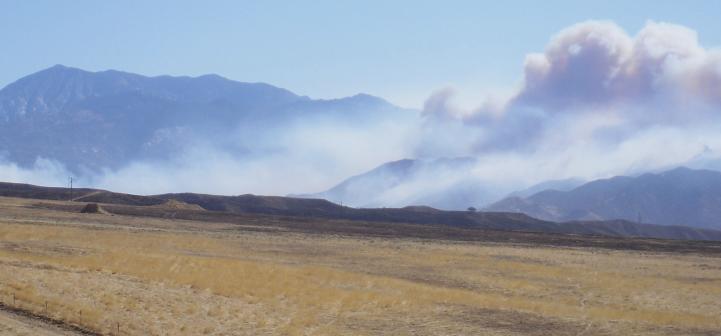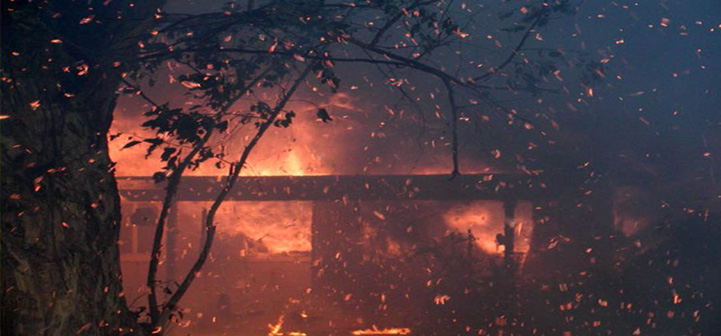
Article by Mary Wilson, Half Creek Farm, Bickleton WA
I’ve always felt smugly prepared for whatever disaster might happen on our farm. I spent time organizing a plan in my mind that seemed pretty solid: my animals are used to being handled and all have a calm personality; I have a 3.4 ton pickup and a 16-foot stock trailer that I thought would probably hold all my goats; then I could likely move the cows and llama in the second trip and be done!
Arrogance will usually come back to haunt you and Mother Nature decided I needed a swift kick I guess, so along came the Mile Marker 28 wildfire in Klickitat County on July 24, 2013. We watched it slowly advance toward our farm over a week of hot, dry, windy weather. When we reached Level 2*, we knew we had to move the animals.
I loaded the stock trailer with the first load of goats, having found it would not hold the entire herd. It actually took three trips to move the goats. We also needed two trips to move the cows and llama, for a grand total of…yes, five trips!
The cows–always big pets and easy to handle–turned into uncooperative behemoths when the smoke started moving in. The goats were nervous and agitated and needed to be packed much looser than we anticipated–a beautiful doeling got crushed on the trip. Because we have so many animals, I had to evacuate them to three farms. The wildfire had of course also affected my close neighbors, so I had to move my animals out of the area, which required a move of nearly 30 miles. By the time I loaded the animals, transported them, unloaded them and returned for another load, over two hours had passed. It took five total loads and over 10 hours to move everyone. Not only was this very time consuming, it was also expensive and it didn’t stop there. Several places we hauled to had corrals but the animals all needed hay, so each day we would bring hay and check on animals.
One of my daughter’s rare British Guernsey does kidded at her refugee farm. Fortunately she didn’t have any trouble and we arrived to find a clean, dry doeling.
Our animals were gone about four days; we had to go every day to check them and be sure they had food and water. The farm that took the cows and llama were experienced with cows–they put the cows and llama out on pasture and I didn’t need to make a daily trip to check them.

When we were finally able to bring our animals home and things settled down, we went over our “what worked and what didn’t work” thoughts, so hopefully we’ll be better prepared for next time:
1. Plan on at least $300 worth of gas to move.
2. Plan on a daily trip to check animals and bring them hay every day they are gone.
3. Plan on tame, good-natured animals turning into flighty, panic-ridden kooks.
4. Accept that you may not be able to catch all your animals.
5. Don’t forget dogs and cats in your rush to save livestock. Sometimes in an evacuation you’ll move from Level 2 to Level 3 and authorities won’t let you back in to an evacuated zone. Keep beloved pets with you.
6. Leave pasture gates open so wildlife trying to escape won’t be trapped in your pastures.
*Level 1 = Get ready; wildfire in area— monitor fire status and be prepared to evacuate. Level 2 = Get set; be ready to evacuate immediately if so advised. Level 3 = Go! Evacuate—personnel and property are in immediate danger.
Note—Mary Wilson owns Half Creek Farm, a small farm in south-central Washington where things get quite dry in the summer. In this requested article, she shares the challenges of evacuating livestock during a wildfire. Her experience underscores the importance of being prepared for a disaster, whether it is a fire, wildfire, prolonged power outage, flooding or other threat.–Susan Kerr, WSU Regional Livestock and Dairy Extension Specialist.
